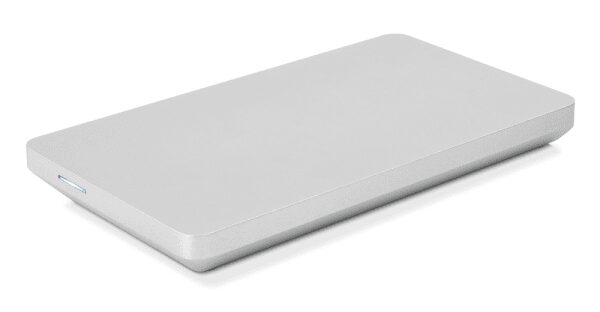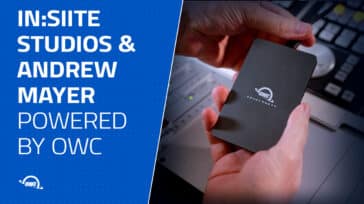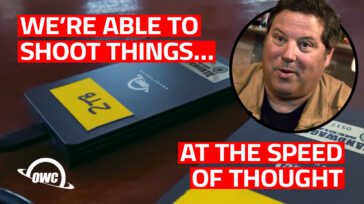
Brian Tweedt, SOC, has been making movies since he was a kid. In fact, he founded his first production company when he was only 15. It wasn’t long after that he traded short films, weddings, and school events, for reality TV locales. As the Sr. Director of Photography on the Warner Bros. series “ElimiDATE” he developed a new multi-cam blocking and shooting technique called “Triangulation.”
Since then he has served as DP and camera operator on shows including Logo’s “RuPaul’s Drag Race,” TruTV’s “Full Throttle Saloon,” PBS’s “Cooking Under Fire,” CMT’s “Hulk Hogan’s Celebrity Championship Wresting,” and multiple HGTV shows including “Deserving Design with Vern Yip,” “Over Your Head” with Eric Stromer, “Power Broker” with Mike Aubrey and Juan Barbieri, “Flip it to Win It,” “Color Splash: Miami” with David Bromstad, “Flip or Flop,” “Christina on the Coast,” and “Flipping 101” with Christina and Tarek, along with episodes of “House Hunters Renovation” and “Vintage Flip.”
Tweedt also served as cinematographer for the documentary “Still Working 9 to 5,” which explores the Women’s Movement through the lens of the 1980 comedy starring Jane Fonda, Lily Tomlin, and Dolly Parton. The film premiered at the 2022 SXSW Film Festival, and is expected to be released sometime in late 2022 or 2023. He also runs The Birdhouse, a small production company providing 8K, 4K, and 2K (HD) cameras and accessories, lights, audio equipment, jibs, dollies, gimbals, quadcopters, teleprompters and more. He
With Tweedt’s decades of industry experience, we were thrilled to sit down with him for a Q&A that we hope provides everyone pursuing creative endeavors in the media arts a bit of inspiration. Read on below.
Early years
Rocket Yard: When was the first time you knew you wanted to do the kind of job you’re doing now?
Brian Tweedt: I can still remember being about 8 years old, picking up my dad’s 35mm film camera and looking through the telephoto lens. I was blown away how I could see details so clearly, and I became obsessed with taking still photos. This hobby eventually turned into a high school video production business, where I would tape the school’s plays and sporting events, and sell tapes to the students. I realized I could make money doing something I loved, and attended USC’s School of Cinematic Arts to pursue my dream. And I’ve been at it ever since.
Shifting sands
RY: How has your industry changed over the years? What’s better? What’s worse?
BT: The TV industry has gone though many changes in the last 20+ years. We went from 3 major TV Networks, to the explosion of Cable TV making hundreds of channels available, to nearly unlimited “channels” with on-demand content, thanks to the internet. Because there are so many options to watch now, advertising dollars are spread more thin. So while there are many more jobs available in the entertainment industry now which is great, unfortunately many of them are low-paying. On the flip side, if you can produce compelling content, you may be able to be your own production studio and distribution network, thanks to the lower cost of equipment and the internet.
RY: Tell us a story about a major milestone you had in your career that took it to a new level.
BT: For the first few years after college, I did a lot of work on various projects as a Camera Assistant, Camera Operator, and Gaffer (the person in charge of lighting). But it was a phone call for a new Warner Bros. “reality show” called ElimiDATE that gave me my first break into television. At the time, unscripted TV was in its infancy, and TV producers were willing to take a risk on young Directors of Photography who were willing to help figure out how to film such a show. I went on to become the Senior Director of Photography of this show, which ended up totaling over 750 episodes. The experience of filming this show nearly daily for 5+ years was excellent practice for becoming an experienced camera operator and cinematographer, as the experience pushed me to quickly make decisions on set in a variety of scenarios. After this experience, I was able to easily move to being a Director of Photography on many other unscripted shows and documentaries.
Advice for the next generation
RY: What advice would you give to people aspiring to be where you are in your business/career now? Both for someone just starting, and for someone who may already be doing, but is looking to take it up a notch.
BT: The path to becoming a successful Director of Photography/Camera Operator is a difficult one, and is rarely achieved in a matter of years. Many work for decades as they perfect their craft, as there is so much to know and learn. And once you think you are getting close to knowing it all, inevitably new technology will arrive that changes the game. So the key is to stick with it! I always try and think of myself as a student who is going to get to learn something each day—because I almost always DO learn something each day that I can apply the next!
For someone just starting in the industry, I find those who become successful come to set with a positive can-do attitude. That attitude makes the shoot day enjoyable, and those in charge will take notice. And they will be more likely to bring you back for future jobs so you can gain more experience while paying the bills.
I always feel like when you are getting a bit too comfortable with your work on set, that is an indicator that it is time to push yourself into a slightly uncomfortable situation. Try new things! Get out of your comfort zone! Try an different style of shooting, or a different genre, or a new camera. So for those who want to expand their career, you need to always keep pushing the envelope to keep moving yourself forward.
Tools of the trade
RY: Which OWC products do you use, and what role do they play in your business/career?
BT: My first purchase from OWC was the “OWC Mercury Elite-AL Pro” drive in the early/mid 2000’s which allowed me to use the Firewire 800 port on my MacBook Pro. The drive worked great, and I’ve been a fan ever since.
As my storage needs have grown from editing 2K footage—to now 4K and 8K RAW footage—I began to rely on the OWC Mercury Elite Pro Dual drives which offered more storage space. And more recently, I have been moving toward the OWC ThunderBay 4, utilizing SoftRAID to monitor the health of the drives. I am using the RAID 4 setting, which allows really fast drive speeds with the reassurance of data safety. And they can hold huge amounts of data on one drive, which works great for large Final Cut Pro Libraries and for keeping large projects elements together.

I just recently purchased an 8TB OWC Thunderblade which I love. I take it with me on the road and use it with my M1 MacBook Pro. After a day of shooting on RED cameras, I first copy the 2-3 TB of RED cards to the Thunderblade.

I then do a quick color correction on the footage to save the Post Production department a lot of time, and to ensure the visual “look” I intended.

Then, I simply copy it to an OWC Envoy Pro EX SSD, which is shipped overnight to the Post Production facility. I also have found the OWC Drive Docks to be very useful for backing up and transferring critical footage. ◼️





